Colorado is ideal in the spring whether you’re visiting with the family or you reside here all year round. There are challenging snow activities in the High Country, pleasant weather in the stunning Front Range, and thrilling excursions for all ages.
Although there are stunning mountains that will take your breath away, another thing that makes the Mile High state beautiful is the flora! We know it can be tricky to plant bulbs with the elevation and constantly changing weather.
Our team has found the best tips to plant tulips in Colorado. Whether you’re adding some color to a storefront or you’re prepping your Denver home to sell, keep on reading to find out how to successfully grow tulips even if you lack a green thumb!
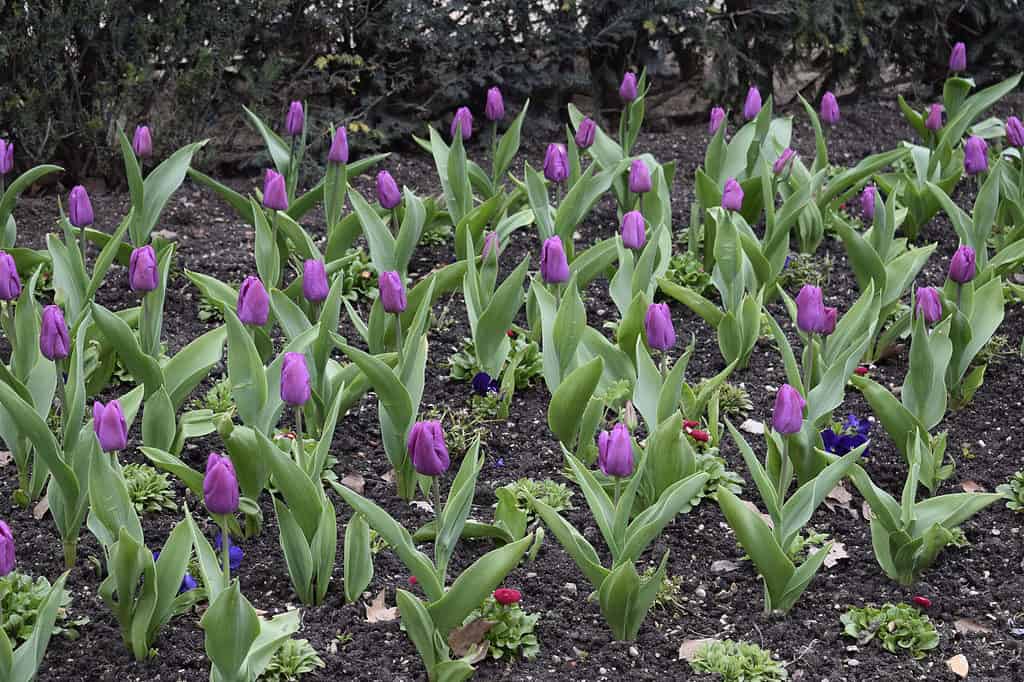
Several species and cultivars of tulips thrive in U.S. Department of Agriculture plant hardiness zones three to eight.
©iStock.com/Wirestock
Know the Growing Seasons
The Colorado growing area varies between three to seven in different portions of the state, which affects the length of the growing season in mountainous areas, semi-arid deserts, and warmer lowlands.
Several species and cultivars of tulips thrive in U.S. Department of Agriculture plant hardiness zones three to eight, making them resilient and adaptable plants. Tulip bulbs should be planted all around Colorado in September or October, at least six weeks prior to the ground freezing, and once the temperature has dropped to 55 degrees.
To guarantee that they will bloom in the spring and to prevent them from being forced out by freezing and thawing, the bulbs require ample time to root. Plants that are planted too early may become confused and develop their tops instead of their roots. If the bulb is planted too late, it won’t have time to take root before the ground hardens.
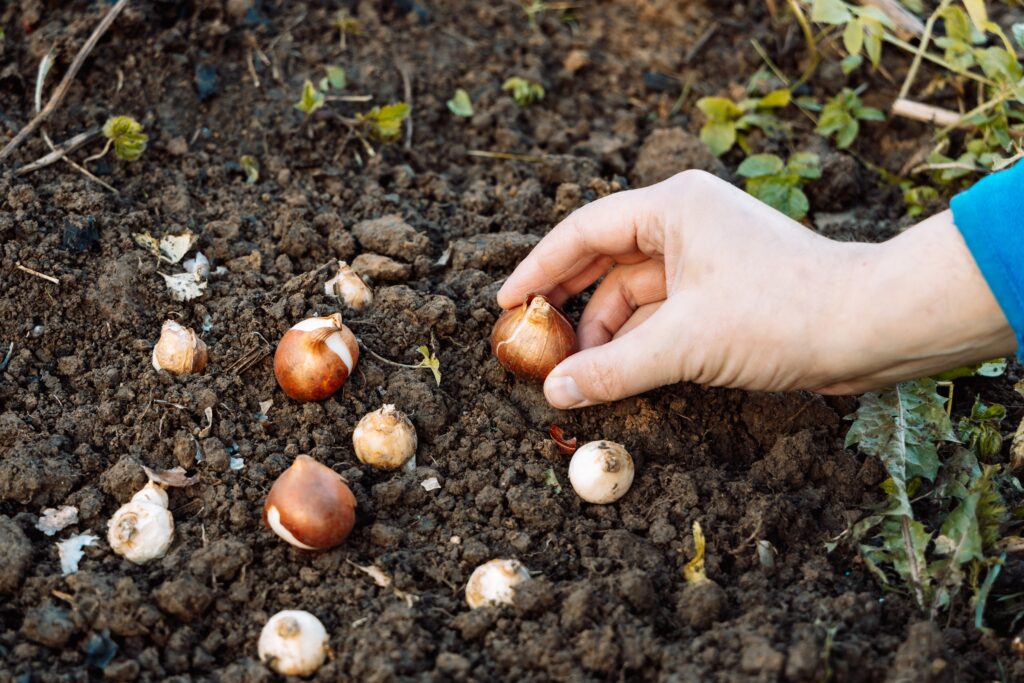
To prevent damaging the roots, add fertilizer to the soil three to four inches underneath the planting depth.
©S.O.E/Shutterstock.com
Preparing Soil for Tulips
Tulips thrive in sandy loam with a neutral pH of 7.0, according to experts. In Colorado, treat thick clay soils by adding decomposed compost or sphagnum peat moss. Use a phosphorus fertilizer with the formula 0-46-0 at a rate of 1/2 pound per 100 square feet.
To prevent damaging the roots, add fertilizer to the soil three to four inches underneath the planting depth. Take care not to compress this soil layer beneath the bulbs. Tulip bulbs should be planted with their tips facing up at a position that is four times their height from the soil’s surface to their tips.
Based on the bulb size, place bulbs four to six inches apart, or five to nine bulbs per square foot. To keep chilly, dry air from getting to the bulbs throughout the winter, water the bulbs thoroughly so that water enters the roots and softens the soil surrounding the bulbs.
When there isn’t any snow covering the ground, take a few inches of organic matter mulch to help keep soil temperatures stable. This will also help prevent the soil from losing too much moisture. The bulbs shouldn’t need additional watering after planting until spring.
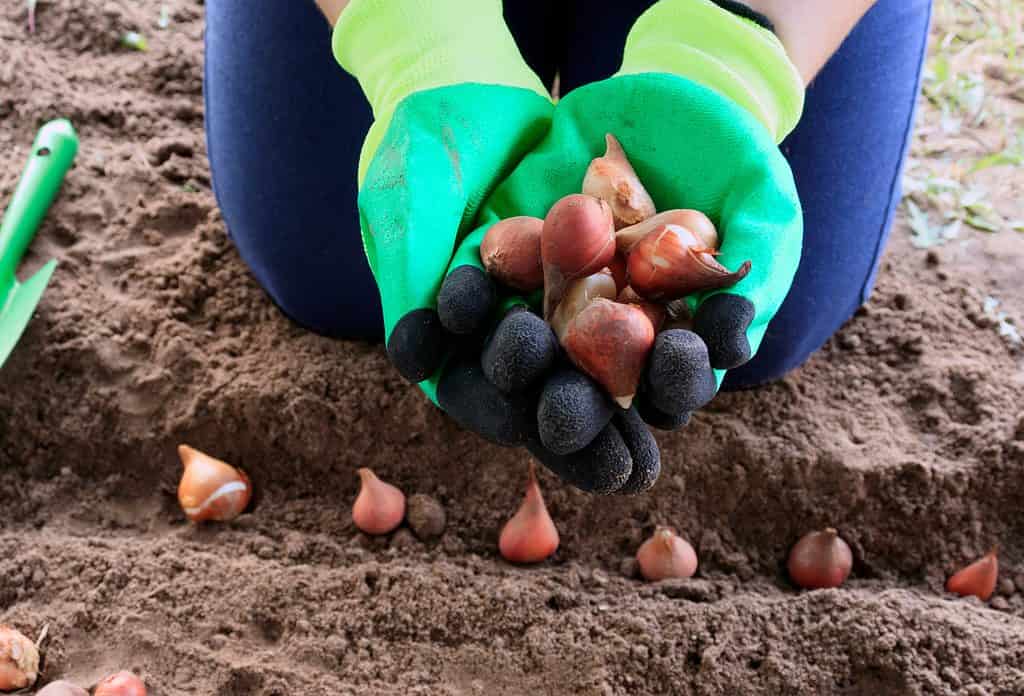
Considering the many microclimates on your land, select a tulip variety that thrives in your region.
©Natallia Ustsinava/Shutterstock.com
Planting For the Climate
The USDA plant hardiness zones in Colorado range from four to six, with the majority of the state falling in USDA zone five. The chilly mountain areas are in USDA zone four, and the warmer portions in western, southwestern, and southeastern Colorado are in USDA zone six.
Considering the many microclimates on your land, select a tulip variety that thrives in your region. For instance, bulbs placed against a protected south-facing wall will produce shoots before those placed in a site that is more exposed.
Although temperatures under freezing may destroy early-blooming flowers, the initial growth can survive early spring frosts. Plants that routinely sprout when the temperature falls below freezing in the latter part of winter or early spring could sustain irreversible damage.
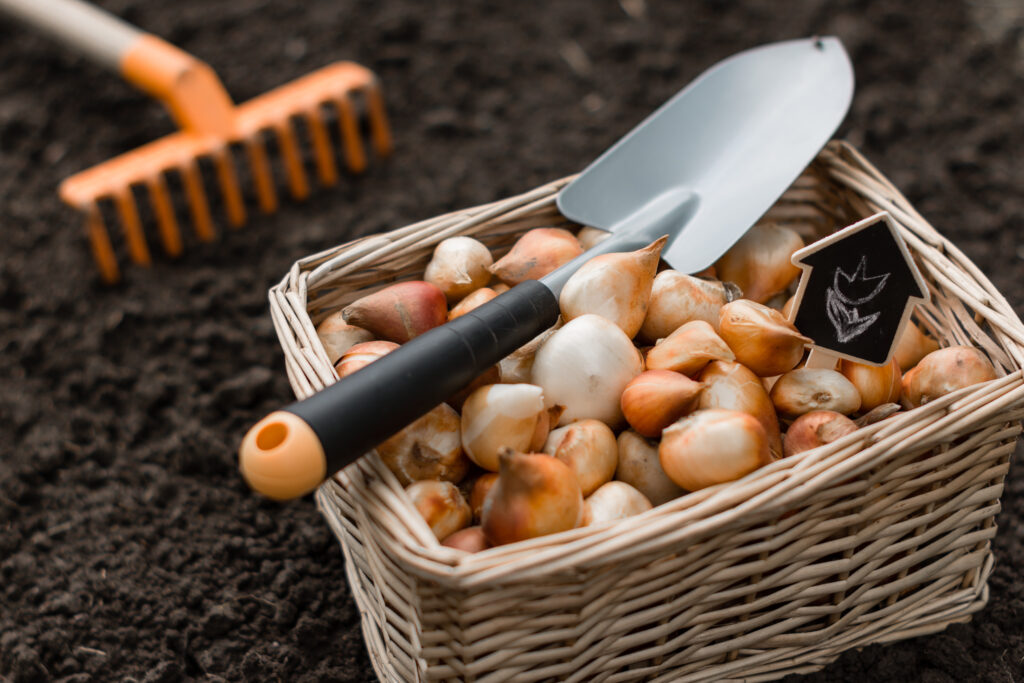
Tulips need 16 to 18 weeks of cold to flower, just like the majority of bulbs do.
©Jurga Jot/Shutterstock.com
Planting Tulips in Colorado in Autumn
Tulips need 16 to 18 weeks of cold to flower, just like the majority of bulbs do. A biological reaction is triggered by cool temperatures, which causes the flower to bloom. Flowers may appear if the freezing season is too brief, but they won’t be fully grown.
For the greatest variety, buy your bulbs early in autumn and keep them cool, between 35 and 45 degrees Fahrenheit, until it’s time to plant your tulip bulbs. Planting tulip bulbs in September is generally recommended for hilly areas of Colorado in USDA zone four. Plant in October in USDA zones five and six where it is warmer in Colorado.
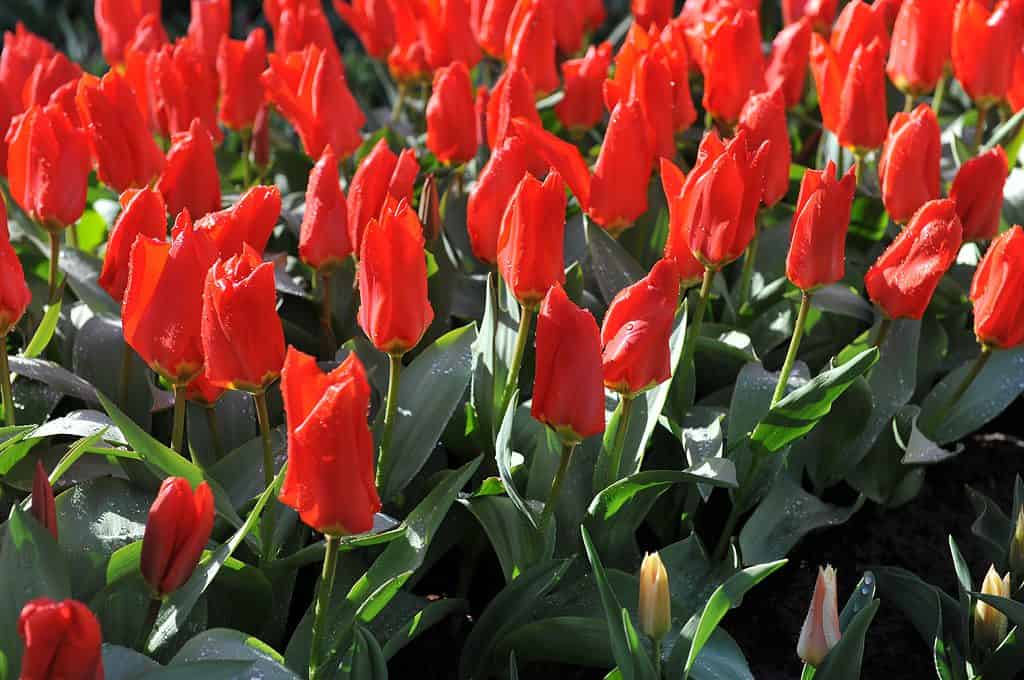
Early tulips typically bloom in cities like Denver between late March and mid-April.
©Sergey V Kalyakin/Shutterstock.com
Tulips Blooming in Colorado
Early tulips typically bloom in cities like Denver between late March and mid-April, mid-season tulips bloom between mid-April and early May, and late tulips bloom between early and mid-May.
Triumph Tulips are hybrids of Darwin tulips and early tulips, and they bloom at the same time. They have one standout quality that allows annuals to be planted among them rather early: their leaf ripens and falls off quicker than most tulips. Some people also use force effectively.
Tulips with the Darwin Hybrid variety bloom at the same time as Triumphs. They have blooms that are formed the most traditionally. About 10 days before the Darwins are the Darwin Hybrids. Both have strong stems that are useful for chopping.
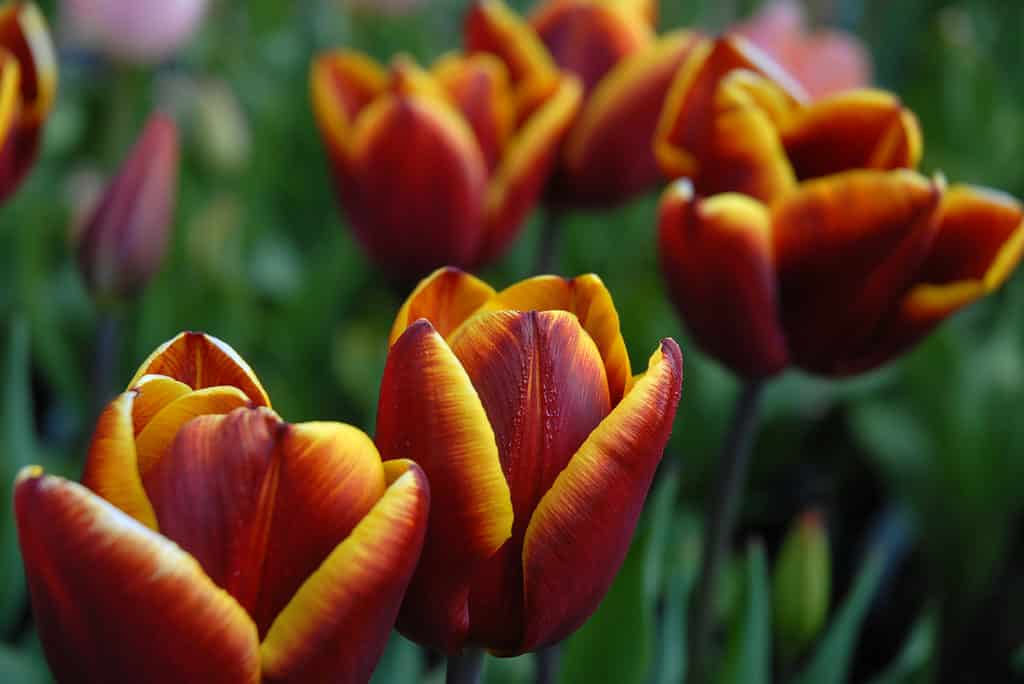
Triumph Tulips are hybrids of Darwin tulips and early tulips, and they bloom at the same time.
©Josie Elias/Shutterstock.com
Thank you for reading! Have some feedback for us? Contact the AZ Animals editorial team.








